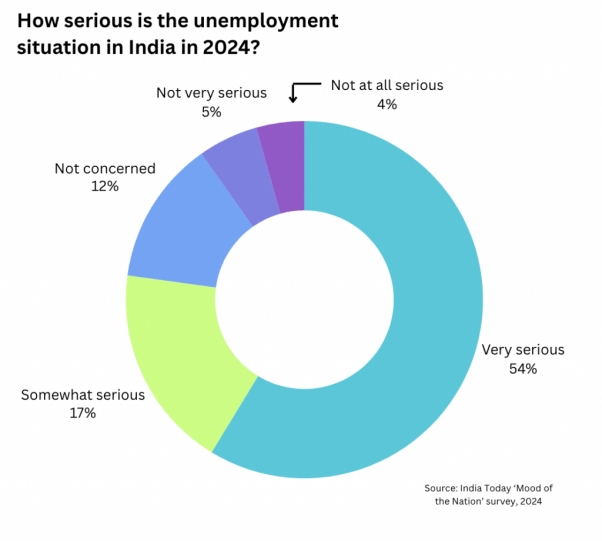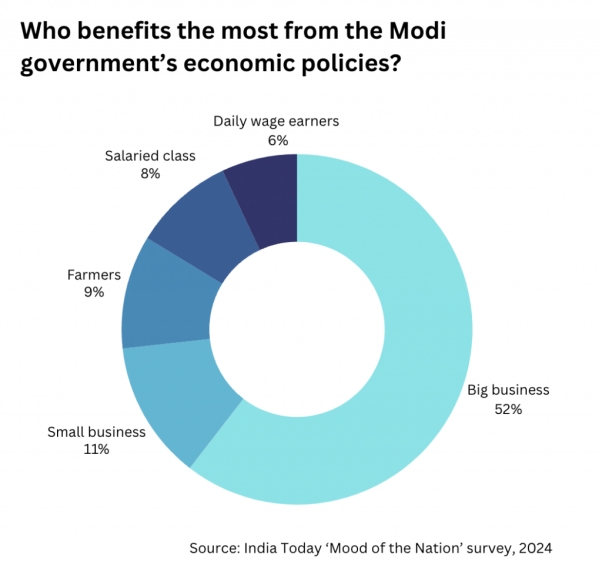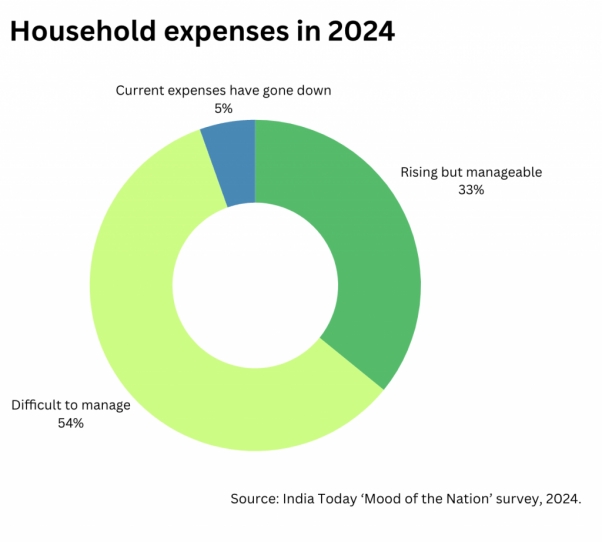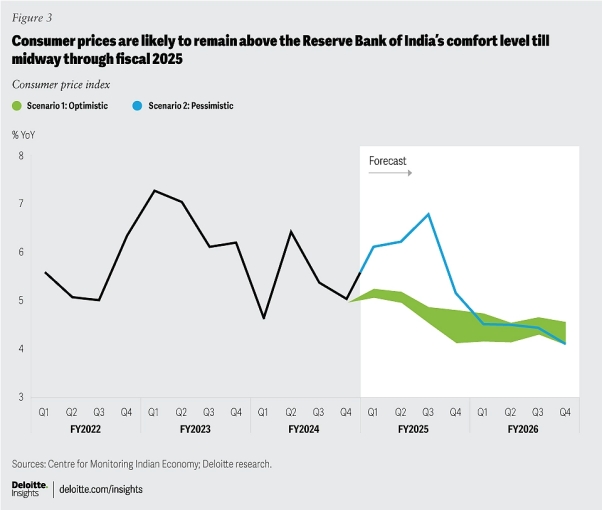

Inflation: This unannouced tax hits the poor hard
By Philip Mudartha
Bellevision Media Network
The Bollywood dialogue sums up the lives of the poor in India: Baki kuch bacha to mehngai maar gayi! If there is anything left, it is the price-rise which kills us, the poor.
In earlier exclusives, I have dealt with two crucial issues: 1) Unemployment, especially youth unemployment due to which our youthful demographics is wasted. And 2) increasing inequalities of incomes and weath.
To recap, the following pie-chart summerises the unemployment situation in India according to the “Mood of the nation” survey conducted for India Today.

A majority of 71% among the respondents feel that unemployment is a serious issue of whom 54% feel it is VERY serious. The ruling dispensation had promised to crate several crores of new jobs each year during earlier election campaigns. This is a broken promise, a JUMLA! Instead what happened is two events caused loss of existing jobs: the first is demonetization, a man-made disaster. The second is lockdown during Covid pandemic, the man-made response intended to limit the spread of the virus. The latter is understandable but the former is not. As a result of both, waves of urban gig workers reverse migrated to their villages and became “unpaid agricultural labour”. In a developing economy, the share of labour in agriculture decreases, as labour shifts to higher productive jobs in manufacturing and services sectors.
The same “Mood of the nation” survey finds that big business benefitted the most under Modi.

A majority of 63% feel that Modi runs a business-centric government. Note that 52% feel that BIG business benefits the most from his government policies. No wonder that the “suit boot ki Sarkar” jibe got under Modi’s skin and he framed several welfare schemes.
45% of our workforce in engaged in agriculture and contribute only 15% to the national GDP. In a developing economy, surplus labour shifts from agriculture to sectors like manufacturing and services. Labour-intensive small businesses should employ them and in the process tackle both unemployment and poverty. The government should frame policies keeping these objectives in mind.
Inflation, the curse of the poor:
In this exclusive, I deal with the third crucial issue which is price rise or inflation.

The same “Mood of The Nation” survey showed that for a whopping 87% the “achche din” never materialized. Instead, their household expenses rose; for 54% households the increase was difficult to manage and another 33% found the rising expenses manageable.

At international front, two wars –Ukhraine and Gaza, are ongoing affecting commidity prices. On the domestic front, there were stories about soaring vegetables prices, especially, tomato, onions and garlic prices. Inflation peaked at 7.44% in July 2023 owing to food inflation.
Consumer prices of food and beverages surged by 8.02% in November 2023. Among these items, the major drivers were cereals, fruits, vegetables, pulses, and spices: all of them surged over 10% with the latter two surpassing by 20%. Among food and beverages, oils & fats were the only component that recorded a decline in prices by around 15%. That is because, the highs were recorded at the onset of Ukhraine War, affecting sunflower oil market.

The inflation is going to remain at elevated levels above the RBI target of 4%.